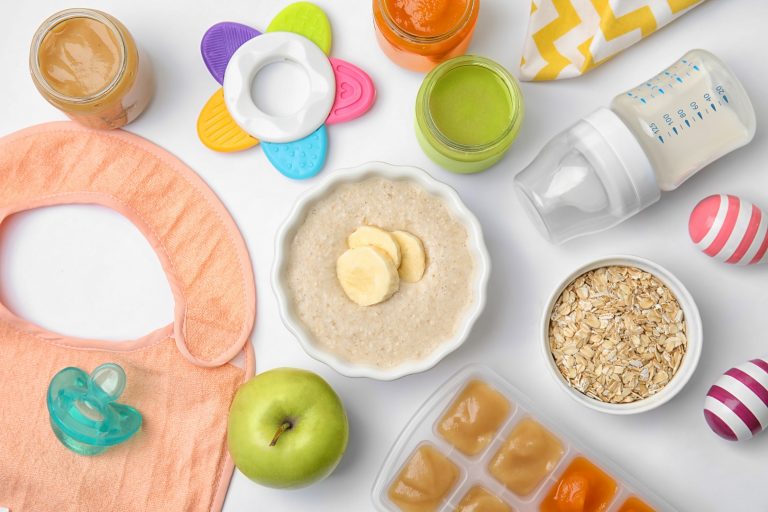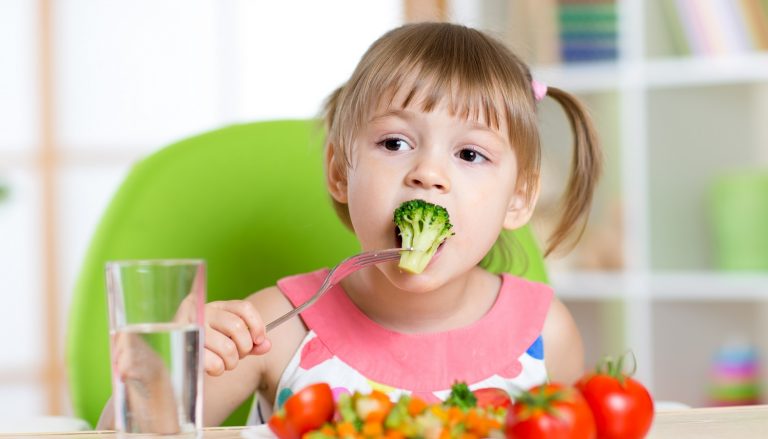Are you a parent of a cute little one? Then, be ready to learn much new for yourself. Every parent wants his/her baby to be healthy and happy. Proper nutrition plays an essential role in a child’s health. Parents should take care of the proper nutrition of the baby since birth. Choose food for your kid carefully following the main principles of the healthy nutrition. The best food for the baby is mom’s milk, but not all women can breastfeed their babies.
Is the absence of milk a reason for worries? Not in the world of innovative technologies. The best baby food from birth to one year is artificial mixtures, the composition of which is close to breast milk. Besides, there are instant porridge, cookies, and other healthy snacks for little ones from worldwide-known baby food manufacturers.
In This Article
Nutrition of Your Baby: What Foods to Choose?
In the first months of a child’s life, if breastfeeding is not possible, adapted mixtures from ordinary milk of cows or goats are used. In fact, mixtures are made from whey with added casein protein. The first component should be about 60-80%; otherwise, it will be difficult for the child to assimilate the milk replacer oversaturated with protein. Not to overload the kidneys of the baby, the protein content in the mixture should not exceed 1.2 g per 100 g of the product in the first months.
An older child can be given food with 1.5-1.7% protein. Pay attention to the amount of fat in the composition (3.4-3.6 g per 100 ml of the finished mixture is considered the norm) and carbohydrates. The latter can only be represented by lactose in the amount of 6-8 g for the same portion of the product.
Make sure there are no following ingredients in the adapted mixture:
- Carbohydrates in the form of sugar, glucose, and fructose
- Palm oil
- Starch (except for rice in antireflux mixtures)
But even if your baby is breastfed, you still can’t get away from buying ready-made baby food. At about 5-6 months, the baby will need to be introduced to fruits and vegetables, starting with clarified juices without sugar and gradually moving to mashed potatoes. And only at 9-10 months, you can switch to meat and fish pates without salt and seasonings.

What Influences Food Preferences of a Child?
In addition to the taste itself, the formation of a child’s food preferences is also influenced by the smell of food and its consistency and structure. When introducing complementary foods (when the baby begins to show nutritional interest), it is important not to make mistakes and take care of all the components of the product offered to the child:
- It should arise interest in its design
- Stimulate appetite with the smell
- Consistency and composition must correspond to the age of the baby
Most parents choose Holle formula organic food supply as it meets all the requirements for baby nutrition. It not only helps the baby build the correct eating behavior but also attracts the child with interesting packaging. Each formula is designed for a certain age based on the peculiarities of the baby’s needs. Giving this food to your kid, you can be sure that it contains no harmful ingredients. Holle formulas contain prebiotics, fatty acids for the normal functioning of the nervous system, and other useful ingredients for a baby’s growth. Many moms feed their babies with Holle until 12 months and later as kids just love formulas that can substitute mother’s milk or be added to the baby’s ration as a tasty and healthy supplement.
First Taste Experience
When should you teach your baby the correct eating behavior? General advice: the sooner, the better. Scientists conducted a study in which they observed the eating habits of 1,500 children from birth to the age of 6 years. It turned out that children who ate few vegetables and fruits before the age of 1 year refused to eat them even at 6 years old.
According to scientists, the best age to teach children to eat healthily is 11 to 12 months. Moreover, children who are breastfed are more inclined to try new food.
The child gets acquainted with tastes even before birth. The first such experience occurs in the mother’s stomach when the baby swallows amniotic fluid, the taste of which depends on her nutrition. Then, receiving mother’s milk, the infant also tastes mother’s nutrition. Perhaps, this explains the easier addiction of such children to various products introduced with complementary foods than in bottle-fed babies receiving mixtures with a stable composition and uniform taste.
It has been experimentally proven that the child’s perception of new products is different, depending on whether they were present in the mother’s diet during pregnancy and lactation. Take care of your own rational diet at these stages: it is you who has a leading influence on the adequate formation of the baby’s taste.
Some taste preferences are noticeable already in the first months of a baby’s life: he/she may, for example, favor sweet and salty tastes and reject bitter and sour ones. To some extent, this is a protective function of the body — to avoid food that may contain poisonous and toxic substances because it has a bitter taste.
Healthy Nutrition Rules You Should Follow
So, what are the rules, the observance of which will allow the child to instill the necessary dietary habits and ensure a healthy diet?
- Form your baby’s eating habits during pregnancy. Eating healthy during pregnancy is the path to healthy eating after your baby is born. The diet of a pregnant woman has an impact on her baby’s future eating habits. It is important to understand that “healthy” means “balanced” in the first place, and completely avoiding all “tasty” is not meant here: a balanced diet can contain all foods, but you should limit the consumption of foods high in salt, sugar, and saturated fats.
- Think over your menu while breastfeeding. Many people know that a mother’s breast milk provides immunity to the baby and reduces the risk of food allergies. But besides this, it gives mothers an additional opportunity to form correct eating habits in their babies. The baby can get used to the foods included in the mother’s diet already in infancy.
- Don’t give up if your child refuses to accept the healthy complementary foods you are introducing. The best way to train your child to eat healthily is to regularly offer healthy foods. You should not give up if he/she refuses them over and over again — sometimes, you just need to patiently offer several times (5, 10, 15 times — on the 16th, the baby gives up and starts eating). Your position should be not tough but persistent. It is important that you have enough patience — clearly formulate for yourself what you want to teach your baby, persistently follow your rules, and do not give up.
- Observe the diet. Try to organize the daily regimen so that the baby has 4-6 meals a day in small portions (it is better for the kid to ask for supplements than the half-eaten part of the plate goes to the trash bin), preferably at about the same time. This will ensure the maintenance of blood sugar levels, protecting the brain from starvation.
Follow the rules above to provide proper nutrition to your little one. Maintain a variety of foods. The daily diet should contain all the necessary vitamins and minerals. The body needs a sufficient amount of liquid, proteins, fats, and carbohydrates — microelements for health and good spirits. But take care of a varied menu. If there is one and the same thing, this can lead to a deficiency of essential vitamins, and the baby will begin to refuse even previously favorite foods.











